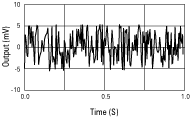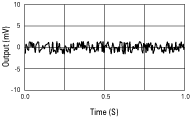Resolution is defined as the smallest reliable measurement that a system can make and is essentially a measurement of electrical noise in the output.
Measurement Units and Bandwidth: This Is Important
It is an industry custom to present resolution specifications as RMS values. Peak-to-Peak (p-p) values, which are always higher than RMS values, are usually more informative for most applications. For Lion Precision products, p-p values are about 8-10 times higher than RMS values.
A resolution value without bandwidth is nearly meaningless.
Resolution values are only meaningful when specified at a particular bandwidth. When bandwidth is lowered, noise is reduced and resolution improves. This is a great way to improve resolution, but it can also result in misleading specifications.
When you see resolution specifications listed as “Dynamic” and “Static” you still don’t know the bandwidth. Sometimes “Static” means a bandwidth of 1 Hz which is grossly misleading as you’re unlikely to ever operate at such a low bandwidth and will not be able to achieve the “static” resolution in your application.
For complete details on fully understanding the resolution specification and what it takes to actually replicate the specification in your application, see our article:
Understanding Sensor Resolution Specifications and Effects on Performance
|
Bandwidth Changes Resolution
15 kHz Output Noise
100 Hz Filtered Output Noise |


